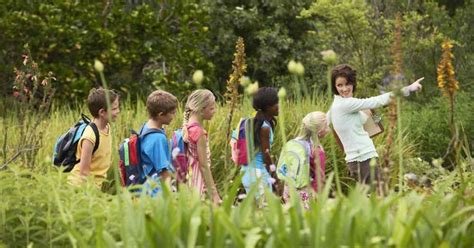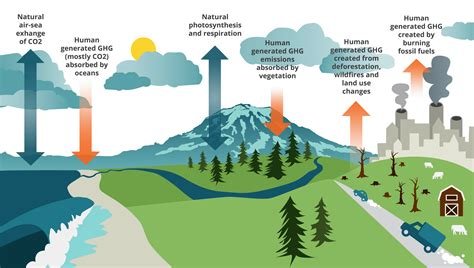Exploring Nature with Kids: Outdoor Activities and Educational Opportunities
Are you looking for fun and educational activities to do with your kids? Exploring nature with children provides a wealth of opportunities for learning, adventure, and bonding. In this blog post, we will delve into the many benefits of immersing kids in nature, from developing a love and respect for the environment to fostering curiosity and creativity. We will also explore various outdoor activities that families can enjoy together, such as hiking and trail walking, wildlife spotting, engaging in science experiments, creating nature-inspired art and crafts, and documenting their findings in nature journals. Additionally, we will discuss the educational value of learning about ecosystems, habitats, and biodiversity, and how to incorporate them into outdoor games, picnics, and camping trips. Join us as we uncover the endless possibilities for nature exploration and learning with kids.
Benefits of exploring nature with kids
Exploring nature with kids has numerous benefits that go beyond just a fun day out. Not only does it provide an opportunity for children to learn about the environment, but it also allows them to develop a deeper connection with nature. Being outdoors is essential for a child’s physical and mental development, and it can help them develop a sense of curiosity and wonder about the world around them.
Kids who spend time exploring nature are more likely to be physically active, which can lead to improved overall health. Hiking, bird watching, or simply playing in a natural setting can help children develop better motor skills and coordination. They also develop a greater appreciation for the natural world, leading to a sense of environmental stewardship and a desire to protect the planet.
Furthermore, spending time in nature can have a calming effect on children, especially those who may struggle with anxiety or attention issues. Studies have shown that exposure to nature can reduce stress and improve overall well-being. Kids who spend time outdoors also tend to have better focus, which can positively impact their academic performance and cognitive development.
In addition to the physical and mental benefits, exploring nature with kids provides an opportunity for bonding and creating lasting memories. Whether it’s spotting wildlife, collecting rocks, or simply enjoying a picnic in the park, the experiences shared in nature can strengthen family relationships and create a sense of adventure and exploration.
Exploring nature through hikes and trails
When it comes to exploring nature with kids, one of the best ways to do so is by going on hikes and trails. This provides an opportunity for both kids and adults to immerse themselves in the natural environment, observe wildlife, and appreciate the beauty of the great outdoors.
Walking along hiking trails allows for an up-close and personal experience with nature. The sounds of birds chirping, the sight of colorful butterflies fluttering by, and the fragrance of wildflowers in the air all contribute to an enriching sensory experience.
Moreover, hiking also offers the chance to learn about different types of plants and trees, as well as various geological formations. Kids can develop a greater understanding and appreciation for the natural world as they observe and interact with their surroundings.
Overall, exploring nature through hikes and trails is a fantastic way to foster a love for the outdoors and encourage a sense of environmental stewardship in children.
Discovering wildlife and biodiversity
When exploring nature with kids, one of the most exciting activities is discovering the diverse wildlife and biodiversity that exists in the outdoors. From colorful birds to tiny insects, the natural world is full of fascinating creatures waiting to be observed and learned about.
One of the best ways to discover wildlife is through hikes and trails. Whether it’s a local park or a nature reserve, these trails provide the perfect opportunity to spot different species of animals and plants in their natural habitats. It’s a great way to teach kids about the importance of preserving these natural environments for the creatures that call them home.
Engaging in outdoor science experiments can also be a fun way to learn about wildlife and biodiversity. Setting up a simple experiment to observe the behavior of animals or the growth of plants can be both educational and entertaining for kids.
Documenting the findings through nature journals is another valuable activity. Kids can note down the different species they encounter, sketch their observations, and write down their thoughts about the biodiversity they have discovered. This not only reinforces their learning but also creates a keepsake of their outdoor adventures.
Engaging in outdoor science experiments
Engaging in outdoor science experiments can be a fun and educational experience for kids of all ages. There are countless opportunities to explore scientific concepts while enjoying the great outdoors. One of the benefits of conducting science experiments outdoors is the ability to observe natural phenomena in their natural environment, which can lead to a deeper understanding of scientific principles.
Outdoor science experiments also provide a hands-on learning experience that allows kids to engage with the natural world in a meaningful way. Whether it’s studying the behavior of animals, exploring plant life, or experimenting with the properties of water and soil, there are endless possibilities for outdoor science exploration.
By taking science experiments outdoors, children can develop important skills such as critical thinking, problem-solving, and teamwork. They can also gain an appreciation for the complexity and beauty of the natural world, fostering a lifelong interest in science and the environment.
So, whether it’s setting up a weather station, conducting soil tests, or studying the life cycle of insects, engaging in outdoor science experiments is a fantastic way to inspire a love of learning and exploration in kids.
Nature-inspired art and craft activities
One of the best ways to connect with nature and ignite creativity in kids is through nature-inspired art and craft activities. Bringing the beauty of the outdoors into art projects can encourage a deeper appreciation for the environment and foster a sense of wonder and curiosity about the natural world.
By collecting natural materials such as leaves, flowers, and pinecones, children can use these elements to create stunning pieces of art. Whether it’s painting with natural dyes, making leaf rubbings, or creating sculptures from twigs and branches, the possibilities are endless when it comes to incorporating nature into creative projects.
Not only do these activities allow children to express themselves artistically, but they also provide an opportunity to learn about the different textures, shapes, and colors found in the environment. Studies have shown that engaging in art and craft activities can have a positive impact on a child’s cognitive development and emotional well-being.
Additionally, nature-inspired art and craft activities can be a fun way for families to bond and spend quality time together outdoors. Whether it’s a nature-inspired scavenger hunt followed by a crafting session or a nature journaling expedition with sketching and painting, these activities can create lasting memories and inspire a lifelong love for the natural world.
Creating nature journals and documenting findings
Creating nature journals with kids can be a fun and educational activity that encourages them to observe and document the natural world around them. By providing them with a journal or notebook, children can record their findings, including drawings, sketches, and written descriptions of the plants, animals, and insects they encounter.
Encouraging kids to keep a nature journal not only helps them develop their observation and writing skills but also fosters a deeper appreciation for the environment. It allows them to take a closer look at the details of nature and to reflect on their experiences outdoors.
Documenting findings in nature journals also provides an opportunity for children to learn about the scientific method and how to conduct field research. They can make hypotheses about the things they observe, conduct experiments, and record their results, thus engaging in hands-on scientific exploration.
Overall, creating nature journals and documenting findings can be a valuable way to connect children with the natural world, promote environmental stewardship, and inspire a lifelong love of nature and science.
Learning about ecosystems and habitats
When exploring nature with kids, one of the most important things to teach them about is ecosystems and habitats. These terms refer to the environments in which living organisms interact with each other and with non-living elements. By learning about ecosystems and habitats, children can gain a deeper understanding of the natural world around them.
One way to discover wildlife and biodiversity is by understanding the different ecosystems and habitats that exist. For example, a forest is an example of an ecosystem, while a desert is another. Each of these habitats is home to a variety of plant and animal species, all of which have adapted to survive in their specific environment.
Engaging in outdoor science experiments is a great way to further explore ecosystems and habitats. Children can learn about the different elements that make up an ecosystem, such as soil, water, and air. They can also study the interactions between living organisms, such as pollination and predation, to gain a deeper appreciation for the delicate balance of nature.
By learning about ecosystems and habitats, kids can develop a greater sense of environmental stewardship. They can begin to understand the impact of human activities on the natural world, and learn how to take steps to protect and preserve these vital ecosystems for future generations.
Nature-based scavenger hunts and treasure hunts
Engaging in nature-based scavenger hunts and treasure hunts can be a fun and educational way to explore the outdoors with kids. These activities provide an opportunity to learn about the natural environment while also promoting physical activity and teamwork.
During a scavenger hunt, kids can search for specific items such as leaves, rocks, or animal tracks, while a treasure hunt involves following clues to find a hidden treasure. Both activities encourage children to observe their surroundings and develop an appreciation for nature.
By organizing nature-based scavenger hunts and treasure hunts, parents and educators can also teach kids about the importance of environmental conservation and the need to protect natural habitats and wildlife. These activities can spark curiosity and a sense of wonder about the natural world, inspiring future generations to become responsible stewards of the environment.
Overall, nature-based scavenger hunts and treasure hunts offer a blend of entertainment and education, allowing children to connect with nature in a meaningful and enjoyable way.
Building outdoor forts and shelters
Building outdoor forts and shelters is a great way for kids to get creative and learn about the natural environment. These hands-on projects help children develop problem-solving skills, teamwork, and resourcefulness. By using natural materials such as sticks, leaves, and rocks, kids can gain a deeper appreciation for the outdoors and the resources it provides. Building forts and shelters also allows kids to engage in imaginative play and role-playing, which can enhance their social and emotional development.
Constructing outdoor forts and shelters encourages kids to spend more time outside, away from screens and technology. It promotes physical activity and helps them develop a sense of independence as they figure out how to build and design their structures. This activity also provides an opportunity for parents and caregivers to engage in quality bonding time with their children, working together to create a safe and cozy space in nature.
Whether it’s a simple lean-to or a more elaborate treehouse, building outdoor forts and shelters can ignite a sense of adventure and exploration in kids. It teaches them important lessons about sustainability, as they learn to utilize natural resources in a respectful and environmentally-friendly manner. Additionally, the process of planning and constructing these structures fosters critical thinking and spatial awareness, as kids consider factors such as stability, weather resistance, and camouflage.
Ultimately, building outdoor forts and shelters offers a range of benefits for kids, from fostering creativity and imagination to promoting outdoor play and instilling a deeper connection to the natural world. It’s an activity that can be enjoyed by children of all ages, providing an opportunity for them to learn, grow, and have fun in the great outdoors.
Organizing nature-themed picnics and camping trips
Organizing nature-themed picnics and camping trips can be a wonderful way to immerse yourself and your family in the great outdoors. These experiences offer a unique opportunity to connect with nature and create lasting memories. Whether you’re planning a day trip to a local park or a weekend camping adventure, there are countless benefits to be gained from spending time in nature.
One of the key benefits of nature-themed picnics and camping trips is the opportunity to unplug from the distractions of everyday life and enjoy quality time with loved ones. By spending time outdoors, families can enjoy a break from technology and screen time, allowing for more meaningful interactions and connections.
Additionally, nature-themed picnics and camping trips provide the perfect setting for engaging in outdoor activities such as hiking, birdwatching, and stargazing. These experiences offer a chance to explore new surroundings and discover the beauty of the natural world.
Moreover, organizing nature-themed picnics and camping trips can also serve as a valuable educational opportunity for children and adults alike. Whether it’s learning about local flora and fauna, practicing outdoor survival skills, or simply appreciating the wonders of nature, these experiences can foster a deeper understanding and appreciation of the environment.
Frequently Asked Questions
What are the benefits of exploring nature with kids?
Exploring nature with kids can help foster a love for the outdoors, promote physical activity, and encourage curiosity and creativity. It also provides opportunities for hands-on learning and environmental stewardship.
How can kids explore nature through hikes and trails?
Kids can explore nature through guided nature walks, nature trails, and hiking trails in local parks or nature reserves. They can observe different plants and animals, learn about local ecosystems, and develop an appreciation for the natural world.
How can kids discover wildlife and biodiversity in nature?
Kids can discover wildlife and biodiversity in nature by birdwatching, insect hunting, and exploring different habitats such as forests, wetlands, or ponds. They can learn about the diversity of life forms and the interconnectedness of ecosystems.
What are some outdoor science experiments kids can engage in?
Kids can engage in outdoor science experiments such as weather observations, soil testing, water quality assessments, and plant growth experiments. These hands-on activities can help them understand scientific concepts and the natural processes at work in the environment.
What nature-inspired art and craft activities can kids do?
Kids can create nature-inspired art and craft activities such as leaf rubbings, rock painting, nature collages, and nature prints. They can also make nature-inspired crafts using natural materials like sticks, leaves, and pinecones.
How can kids create nature journals and document their findings?
Kids can create nature journals to record their observations, sketches, and reflections during outdoor explorations. They can document their findings about plants, animals, and natural phenomena, and use their journals as a tool for learning and creativity.
How can kids learn about ecosystems and habitats in nature?
Kids can learn about ecosystems and habitats by exploring different environments such as forests, grasslands, and wetlands. They can observe the plants and animals that live there, understand the interdependence of living organisms, and appreciate the importance of protecting these habitats.
What nature-based scavenger hunts and treasure hunts can kids enjoy?
Kids can enjoy nature-based scavenger hunts and treasure hunts by searching for natural objects like leaves, rocks, flowers, and animal tracks. They can also search for specific colors, shapes, or patterns in the natural environment and use the experience as a fun and educational outdoor activity.






